EV range - perhaps even ‘real-world’ isn’t reality
/Why is the distance an electric vehicle can travel on a single charge such a big deal?
Read MoreWhy is the distance an electric vehicle can travel on a single charge such a big deal?
Read MoreA national charging infrastructure for recharging electric vehicles is well-established – there’s a charger every 75kms. But does that mean the network enjoys a good state of health?
Read MoreIs a cash-back money-go-round the best way to incentivise electric vehicle uptake?
Read More
TOYOTA New Zealand is continuing to work on the viability of running the 2021 Toyota Racing Series in a national environment in which Covid-19 border restrictions will still be in place, but agrees time for big decisions is passing fast.
``We are working through what the border controls will potentially look like for international drivers,’’ said Toyota New Zealand CEO Neeraj Lala yesterday.
``We’ve had a lot of interest from international drivers wanting to come to New Zealand to race. Border control is the obvious challenge we have to work through. It’s a big hurdle.
``There have been some positive signs we’ve seen with rugby, netball and cricket and we’re hoping we can follow a similar path to those. We are working closely with government officials to see what that position might be.
``We absolutely haven’t given up. We tried making the decision before the end of October but we’ll give ourselves every opportunity and delay it as long as we can.
``I don’t believe we can go past November.’’
Lala isn’t ruling out changes to the calendar or a more compact schedule.
``We are looking at what at series under Covid would look like, whether it be a North Island series only.
``But there are other things to consider. To meet our qualification for Super License points there are criteria around the number of tracks you have to race at. That’s a key requirement.

``We are considering a condensed time frame. We are exploring all options and we certainly don’t want to give up on it.’’
In spite of travel restrictions there are signs the Toyota Racing Series has become an even more attractive option for emerging young racing drivers from around the world.
``We have had overwhelming interest this year, more than any other year, for internationals to come to New Zealand and race,’’ Lala said.
Andrew Davis, Toyota’s general manager of marketing and motorsport provided more details on the TRS plans.
``There are lots of options on the table. We have submitted a set of expressions of interest to MBIE [Ministry of Business, Innovation and Employment] and Immigration and we have their support along with Sport New Zealand around being able to review that,’’ Davis said.
``We are encouraging them to review our application as quickly as they can, particularly as other sports are beginning to happen. We need to see how that goes. We haven’t given up.’’
Davis revealed one alternative plan if a full series isn’t viable might be to hold a one-off New Zealand Grand Prix meeting.
``We’ve had positive feedback around running some type of New Zealand Grand Prix. Even if we don’t run a full championship, we are looking at options we can have around a Grand Prix, potentially offering something for the champions that have been racing overseas.’’
He said the Grand Prix idea was one of several alternate plans.
``We’ve got three or four options on the table. We did have the 31st of October as our date to update stakeholders. We’ve pushed that out by a week just to see what happens with Immigration.
``We should have something out early next week and keep people updated as time goes on.
``The cars will be ready to go. We have the people in place and it will all be ready for a full season.’’
At this stage the 2021 Toyota Racing Series is scheduled to start on the January 22-24 weekend. Venues for the originally announced calendar – over five consecutive weekends – hadn’t been confirmed.
The Speedworks NZ Championship calendar currently lists race meetings at Hampton Downs on January 22-24, Taupo’s Bruce McLaren Motorsport Park Feb 5-7, Manfeild Circuit Chris Amon Feb 12-14 and the NZ Grand Prix at the circuit to be confirmed on Feb 19-21.

images Geoff Ridder
IN a variation on the theme of ``build it and they will come’’, rally ace Hayden Paddon faces a ``build it and they work out where you can take it’’ scenario with the fully electric Hyundai Kona rally car he unveiled today.
Paddon’s goal of competing in rallies with an electric car of comparable performance to modern day combustion engine gravel racers is not just a technology challenge. His pioneering programme means working with the sport’s local governing body to position the car in competition.
For the short term that means demonstration runs starting with a few quick blasts around the rallysprint course at the high-profile Battle of Jack’s Ridge event on Sunday November 14.
It will be a very public debut for a car that has only just completed two days of filming work.
By the end of November MotorSport New Zealand hopes to have published its first regulations for electric vehicles. Paddon’s hoping his car helps provide a framework for those rules.
``At the moment it’s going to be demonstrations,’’ said Paddon.
``Going forward we know we have to work with MotorSport New Zealand – one on the safety and two on the performance parameters to actually make it fit in.
``We have started that discussion but the key thing is nobody knows and we need the car running to see what it’s capable of. That gives us a benchmark to work from.
``I’d like to think within two years we can have it accepted within motorsport events including full-length rallies. In the short term we know people want it and it’s good for the sport.’’
There are few question marks over the performance potential of the car created by a small team of seven at Paddon Rallysport Group headquarters at Highlands Park.
In its current guise the car has electric motors and two-speed transmissions front and rear. Each motor has peak power of 200kW and about 360Nm of torque. Paddon says the car is geared to reach 240km/h and can accelerate from 0-100km/h in a little over 3secs.
It’s possible to lift that performace adding another motor both front and rear to double the output to 800kW. Paddon says his initial goal is to tune the car so its comparable to the AP4-spec 4WD Turbo rally cars currently competing in New Zealand.
The EV is a little heavier at 1400kg but the weight is positioned low in the chassis of the Kona.
The battery electric powertrain has been developed from technology supplied by Austrian company STARD. It features advanced safety and control systems.
``It’s very similar to a Formula-E battery. It’s not like an OEM battery and it has a fire system built into it.
``If there was a problem, we have so much control technology in the car to shut things down before anything goes wrong. In the worst-case scenario, it’s got the emergency flood connectors. You flood the battery to stop the car from going on fire.

``The safety in the car is quite is quite phenomenal. It’s not like taking an OEM EV car, putting a roll cage in it and making it a club car. That’s a lot higher risk.
``That’s where it’s difficult for Motorsport NZ going forward, because it’s almost like two sets of regulations between an OEM car and a be-spoke motorsport design EV car.’’
Ahead of development work in the coming months, Paddon believes the tuning the software will outweigh the challenges of mechanical fine-tuning and durability.
``It’s all software. Mechanically the car is way simpler. There are less working parts and it’s strong and simple,’’ he said.
``Mechanically it’s pretty sound. We’ve done two filming days now with a brand-new car and had zero mechanical problems. If you had a combustion car, imagine the amount of teething problems you would have had?
``But we can have bugs in the software. We have to go through all the programming and tuning and that’s a whole different kettle of fish.’’
In order to have the range to complete a full rally, Paddon’s team has created a quick-change battery solution.
``We want to do battery changes. We are not interested in charging on an event,’’ Paddon said at today’s launch.
``We have designed the car for quick battery changes – five minutes we can change a battery.’’
He’s not saying how big the battery is but confirmed it has a smaller storage capacity than the 64kWh battery in the standard Kona electric road car.
The team is working in scale at the moment with enough battery power for short runs at full performance. From there it can calculate the size of battery needed before locking into that expensive choice.
The big rally battery will have to be over 100kWh,’’ said Paddon.
``But right now we have to calculate what we need. The big problem is the batteries are six-figures and if you get the wrong size battery now, you’ve got a battery that’s no good to you.
``With this prototype battery we can simulate very condition – hot, cold, uphill, downhill, twisty, fast - and from all that we can calculate exactly what we need.’’
Other key areas of the development programme will be tuning the torque vectoring and regenerative braking systems and an important aspect of rally safety ensuring the car makes enough noise to warn spectators of its approach.
Paddon talked of airflow systems similar to air raid sirens that would generate different levels of noise as the car moves at different speeds.
``It makes a bit of noise but it’s not at the level we want yet,’’ said Paddon.
``We are still working on a sound generator. We were hoping to have it done by now but there have been some hold ups. It’s high up on our priority list to get that right.
``It will be a different sound. It won’t sound like a combustion car but it will be relevant and be from the inputs of the driver. It’s got to sound real and sound exciting.’’

haydon paddon’s groundbreaking electric rally car, pictured during construction, will be fully revealed tomorrow. It is based on the Hyundai Kona electric car, pictured below.

THE public unveiling of Hayden Paddon’s highly-anticipated Hyundai Kona electric rally car tomorrow is being accompanied by a review of MotorSport NZ regulations to encourage electric vehicles in competition.
Motorsport’s national body says it is supportive of including EVs in competition and 18 months ago it established a Working Group to produce guidelines for their inclusion. The regulations are now at a final draft stage.
``The draft guidelines were to be released a couple of months ago but the United Kingdom recently published their regulations and guidelines so we are reviewing some of the differences,’’ said Terry Carkeek, Motorsport NZ technical manager.
``We hope to have something published by the end of November.’’
EVs can already be accommodated in some events but Carkeek says car clubs wishing to invite any battery-compelled cars to an event should contact Motorsport NZ in the first instance.
``We will then provide them with requirements based on the event and the type of vehicle being used. To date, I think we have had three requests all of which we have been able to provide guidelines for,’’ Carkeek said.
``We currently don’t see any need to limit what competition EVs may run in. There is likely to be a requirement for the venue owner to approve the use of EVs to compete on their property and we would also require the approval of the local fire and emergency agency.’’
He said EVs could compete in a separate category but there is also potential to create an equivalency formula to allow competition against conventional powertrains.
``We currently believe that standard, largely unmodified series production EVs, will be relatively easy to include in a number of motorsport disciplines,’’ said Carkeek.
``We also believe that professionally designed and constructed EVs, like Hayden’s Hyundai, should also be relatively easy to include in some events.
``For EVs that have had the high voltage system modified, we will be looking to establish a certification process for those modifications. We have had initial discussions with LVVTA with a view to using their existing standards to accept those vehicles.’’

TOM SHORT has been a pioneer of electric drive within the sport of drag racing, fronting with modified classic cars including this LH Torana.
Kiwi drag racing has been an early EV adopter with a Tesla Model S and Nissan Leaf appearing at recent Meremere Dragway street car events.
And Taupo engineer Tom Short has built four electric drag racing cars and received a mixed reception in the straight-line sport.
Short has modified classic cars – a Datsun 1200 Coupe, an LH Torana, HT Holden Ute and most recently a 1970 LC Torana GT-R – by installing battery packs and an electric motor.
He achieved early success winning the NZ Drag Racing Association (NZDRA) Super Street national points title in the 2014-15 season with the Datsun. Other than the fact they are near-silent there is little about the performance - or appearance - of Short’s cars that identifies the pioneering role they have played in Kiwi motorsport.
Short said EVs were banned after this title win, re-admitted and then banned again by the NZDRA. At present his car is welcome at events run under International Hot Rod Association (IHRA) rules.
``They [NZDRA] said the ban was for Health and Safety reasons. Some people don’t like change,’’ said Short.
Another area of New Zealand EV competition has been in moto trials.
A small number of Electric Motion electric trials bikes were introduced several years ago. They’ve been used in competition but are now mainly used by riders for training.
At present the big area of EV interest is in mini trials and trail riding with the Oset brand of electric off-road bikes becoming a popular choice for 3-12-year-old riders.
Editor’s note: The end result of a project announced two years ago, Paddon’s car is based on the Hyundai Kona, a compact fully-electric crossover that has been in the market for three years. The rally edition is a world-first for the type and delivers with four-wheel-drive, raised suspension and all the other addenda required for rallying.
It has been developed by the driver and a handful of employees, all hand-picked Kiwi engineers, working from a lock-up at Highlands Motorsport Park at Cromwell. Hyundai New Zealand, the University of Canterbury, Yes Power have supported. STARD, an Austrian racing team that specialises in electric rallycross cars, supplied the battery, inverter and motors.
The car is being unveiled tomorrow night in Auckland at Hyundai NZ’s headquarters.

PLUG-in hybrids are a small - 496 units this year to the end of August - and technically fascinating market segment that sometimes looks poised for expansion.
And at other times it seems destined to remain a specialised niche, somewhere in the no-man’s land between hybrid-assisted models and battery EVs.
So far Mitsubishi has been the only brand to find traction in the PHEV sector.
Outlander PHEV sales account for well over half of all plug-in hybrid sales in New Zealand this year. And that’s a market with 20 different models on sale – and quite a few more on the horizon.
The Mini Countryman PHEV is the number two seller, but at about one-sixth the volume achieved by the Outlander.
Luxury brands also dabble in plug-ins and Mercedes-Benz has so far offered C-Class sedan and GLC SUV plug-ins. The third offering in its so-called EQ Power family is the A 250e hatchback just announced for the New Zealand market.

A further addition to the A-Class family - that now stretches from A 180 to ballistic AMG 45 S 4Matic - the A 250e hits a $72,300 price point. That makes the plug-in version $1900 more than the A 250 4Matic but still considerably more affordable than the hot Mercedes-AMG A 35 4Matic.
With a 15.6kWh battery the A 250e will travel further than most PHEVs on a single charge - an ADR-rated EV range of up to 73km.
A 1.3-litre four-cylinder turbocharged engine develops 118kW output and 250Nm of torque working in tandem with a 75kW/300Nm electric motor which can also recoup additional energy during braking.
The combined output of the hybrid powertrain is rated at 160kW and 450Nm. Acceleration from 0-100km/h is brisk at 6.6 seconds and combined cycle fuel consumption (ADR test) is 1.6L/100km with tailpipe emissions measured at 34 grams/km CO2.
The architecture beneath the fourth-generation A-Class was engineered from the outset to accommodate PHEV components.
The water-cooled lithium-ion, high voltage battery is mounted in the rear of the A-Class hatch and weighs 150kg. Thanks to a smaller 35-litre fuel tank and a repackaged exhaust system - with a rear muffler housed in the transmission tunnel and a centrally positioned exhaust outlet under the floor – there is only a small compromise of load space to 310 litres.

The A 250e delivers power to the front wheels via an 8G-DCT Hybrid eight-speed auto designed to maximise the all-electric range. There are ‘Electric’, ‘Battery Level’, `Comfort’, `ECO’ and `Sport’ drive modes.
In the Electric programme the braking recuperation strength can be selected via paddles behind the steering wheel.
For the first time on a Mercedes-Benz vehicle, the combustion engine is started by the electric motor – the A 250e does not have a separate 12-volt starter. And the A 250e is also the first Mercedes-Benz plug-in passenger model to offer DC charging capability.
The A 250e is equipped with a Type 2 plug capable of delivering charge via AC power at a rate of up to 3.7kW.
To maximise the speed of charging at home or work, customers can install a Mercedes-Benz Wallbox Home charger.
This can be installed on regular single-phase power (by a qualified electrician) to deliver up to 7.4kW, or up to 22kW on three-phase power.
As a $1990 option, customers can purchase a DC Charging Package which enables DC fast-charging at 24kW via a Type 2 CCS plug.

Using DC charging, it may be possible to charge from 10 per cent capacity to 80 per cent in as little as 25 minutes. The Charging Package also doubles the AC charging capability to 7.4kW.
Aside from its powertrain and charging technologies the A 250e offers a familiar package to premium hatch customers.
Standard equipment includes 18-inch Aero alloy wheels, the intuitive MBUX infotainment system with voice control and a fully digital widescreen cockpit, NTG6 navigation, Artico upholstery, smartphone integration including wireless charging and LED headlights.
Pre-entry climate control can cool or heat the vehicle before it’s started thanks to the fitment of an electric refrigerant compressor. This can be controlled via the Mercedes me Connect suite of services from a connected smart phone, which also includes remote vehicle status monitoring.
Standard safety equipment includes Blind Spot Assist, Active Lane Keep Assist, Traffic Sign Assist, nine airbags, Pre-Safe accident anticipation system and Adaptive High Beam Assist head lights.

GEOFF Ridder was on duty for MotoringNZ.com when national level motor racing resumed in the North Island yesterday.
The opening round of the Golden Homes North Island Endurance Series brought a Hampton Downs Three-Hour victory for Taranaki’s Glenn Smith teamed with Kiwi international racer Chris van der Drift in the SBT Motorsport McLaren 650S GT3.
The McLaren qualified on pole position and although dropping to third position in the opening hour, the team ran an untroubled race to build a two-lap advantage during the second half of the enduro to complete 162 laps.
Andrew Fawcett and Sam Fillmore finished two laps back in their Audi R8 LMS after completing a late race pass on the Heart of Racing Aston Martin Vantage GT3 of Brazilian Alex Riberas and Kiwi drift star Darren Kelly. The Aston spent two stints leading in the opening 90 minutes of the race.
Behind the trio of GT3 cars the V8-engined Audi A5 of Matt Dovey and Jono Lester finished fourth. The 3-hour race had 18 starters with nine teams classified as finishers.
There was double Hampton Downs endurance success for McLarens with John de Veth driving Glenn Smith’s other 650S to victory in the 1-Hour race with Porsche GT3 racers Matt Whittaker and Callum Hedge completing the podium.
Now reduced to two rounds in 2020 due the Covid-enforced calendar changes, the North Island Series concludes at Pukekohe on Saturday October 24.
In between the endurance races there was also non-championship Best Bars Toyota 86 action and the completion of the 2019=20 Ryco 24.7 V8 Utes Series.
Series champion Peter Vodanovich was unbeaten in the Toyota 86 action with three narrow wins ahead of Connor Adam while Matt Spratt (two wins and one second) and Andrew Porter (one win, two seconds) shared the V8 Ute honours.

A small displacement Roots-type supercharger assists with the high volume of air needed for ultra-lean combustion.
‘CROSSOVER’ has become a modern automotive buzzword.
Mazda has developed a crossover engine – one which runs on petrol but has combustion characteristics more closely aligned to diesel.
And to emphasise the achievement it’s applied the X-suffix to its SkyActiv nomenclature.
The new 2.0-litre SkyActiv-X delivers the throttle response and revving characteristics of a petrol engine with the high torque and low consumption attributes of a diesel.
It’s a practical application of the Homogeneous Charge Compression Ignition (HCCI) petrol engine principle in which a very lean air:fuel mixture reacts spontaneously to heat and pressure during the compression stroke.
To-date HCCI has been considered impractical for production vehicles because they work in a narrow range of conditions. Variations in atmospheric pressure, temperature and fuel quality can result in destructive pre-ignition and detonation.
Mazda’s clever solution has been to add spark control to an engine that theoretically shouldn’t require a spark plug along with a world-first application of in-cylinder pressure sensors.
The SkyActiv-X engine achieves both spark ignition and compression ignition and can move between modes.
Mazda calls the technology SPark Controlled Compression Ignition (SPCCI). The new engine has a very high 16.3:1 static compression ratio and operates at extremely lean air:fuel mixtures.
The theoretical ideal for gasoline engines is to burn a 14.7:1 air:fuel ratio - known as stoichiometric - which defines that all fuel is burnt without excess air.
SkyActiv-X can operate at ratios more than twice as lean (higher than 30:1) – a scenario in which a spark plug would be unable to ignite the lean mixture.

SkyActiv engine production is now at full steam
In SkyActiv-X the spark plug is used to initiate and control combustion. As the piston is compressing the ultra-lean mixture the engine control systems are monitoring cylinder pressure and combustion is initiated with a small and precisely timed atomised fuel charge being injected close to the spark plug.
When ignited it creates an expanding fireball (Mazda calls this an air piston) that rapidly raises the pressure and temperature in the combustion chamber to the point where the much leaner mixture is ignited.
Mazda says size and timing of the fireball is being constantly altered. At cold start and under high revs/high load conditions the engine primarily works in spark ignition mode.
Across a range of normal driving conditions, it is estimated the engine operates in SPCCI mode about 90 per cent of time.
The extremely lean mixture burns cooler which in turn reduces temperature differences in the cylinder head, piston and cylinder walls. The cooler combustion also significantly reduces the formation of nitrogen oxides (NOx).
Along with less fuel the engine also requires more air for which the solution is a small displacement, belt-driven ‘‘Roots’’ type supercharger.

Mazda's MZ-D Connect centre display provides confirmation of when the SkyActiv-X engine is running in SPCCI mode.
In common with the familiar SkyActiv-G 2.0-litre direct injection petrol unit, the SkyActiv-X measures 1998cc displacement. The engines share much of their block and bore/stroke architecture but a new cylinder head has been designed for SkyActiv-X.
Peak power is 132kW at 6000rpm (compared to the current 2.0-litre SkyActiv-G developing 114kW) along with 224Nm of torque at 3000rpm (up from 200Nm and arriving 1000rpm earlier than current SkyActiv-G engines).
When its powering a six-speed auto Mazda3 hatch on 18-inch alloy wheels the fuel consumption is rated at 5.8L/100km (WLTP test procedure) and Mazda estimates an overall consumption improvement in the region of 15 to 17 per cent along with corresponding CO2 emission improvements.
There’s also a Mild Hybrid contribution to the SkyActiv-X efficiency equation with a belt-driven 24-volt integrated starter/generator system. It assists with engine starting, initial movement away from stationary and bolsters the lower portion of the torque curve.
Hybrid output is rated at 4.8kW of power at 1000rpm with a 60.5Nm torque boost at just 200rpm.
To support the new engine characteristics the gear ratios have been altered. The SPCCI engine doesn’t conform to a normal pattern of increased fuel usage as engine revs increase so shorter gear ratios allow the engine to rev a little higher and provide improved response and a sportier character.
While Mazda has achieved a petrol engine breakthrough with its SkyActiv-X technology, the company says diesel engine vehicles will continue and there is a second generation SkyActiv-D diesel family expected to be announced in the near future.

the Mazda3 (above) and CX-30 are first candidates for this new engine technology.
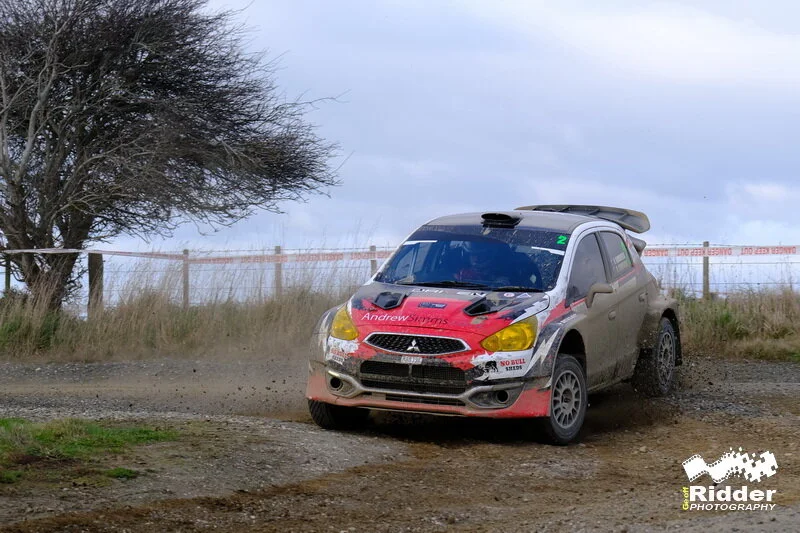
Matt Summerfield on his way to victory in the Mitsubishi Mirage AP4
all images:Geoff Ridder
NEW Zealand rallying restarted today with Rangiora’s Matt Summerfield claiming victory in the 20th annual Catlins Coast Rally.
The six-stage event in coastal South Otago featured 81 crews and very quickly became a duel between top-seed and four-time winner Andrew Graves (Gore) and second seeded Summerfield.
Graves won the opening stage in his Mitsubishi Lancer Evo3 before Summerfield recorded a string of four fastest times to propel his Mitsubishi Mirage AP4 into a 52 seconds lead.
A more conservative run through the final stage allowed the final margin to settle at 38.8s in Summerfield’s favour.
The event was only the second gravel rally staged in New Zealand during 2020 due to recent Covid-19 restrictions. The season-opening Westland Rally had been completed in mid-March.
Hayden Paddon’s objective of running on pace notes ahead of the field as a test session for his Hyundai i20 AP4 proved short-lived and the former WRC star only completed two stages before retiring. His stage times weren’t published.
While Summerfield and Graves raced clear by more than three minutes a late reshuffle of the leader board saw Kaikoura’s Regan Ross (Ford Fiesta R5) climb to third place ahead of Balclutha’s Dean Bond (Mitsubishi Lancer Evo6.5) as Josh Marston (Christchurch) slipped from third to fifth in his Holden Barina AP4.
Another strong drive on the Catlins roads by Christchurch driver Deane Buist was rewarded with sixth overall and he led home the two-wheel-drive competitors in his Mk2 Volkswagen Golf GTI.
Reigning New Zealand rally champion Ben Hunt (Auckland) had a low-key outing in a Subaru Impreza H6 lease car and finished 11th.
The next rally on the New Zealand calendar is the Maramarua Clubmans event on Sunday, September 6.
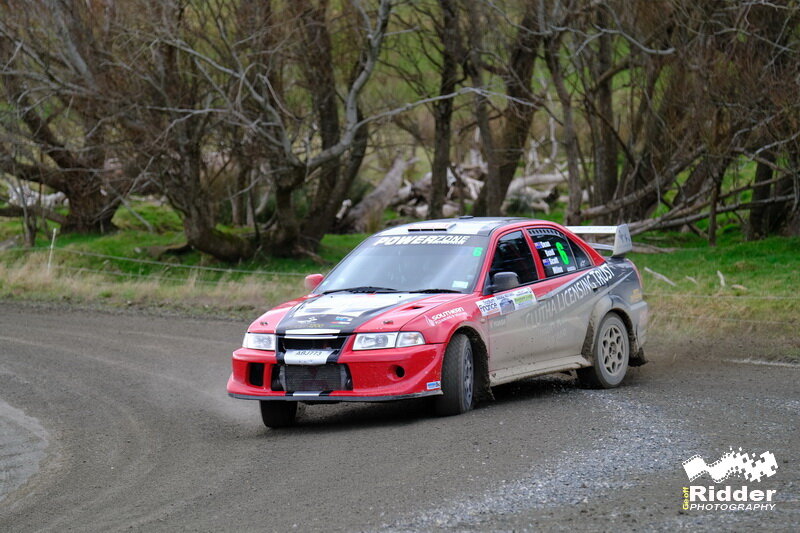
Balclutha's Dean Bond finished fourth in his Mitsubishi Lancer Evo6.5
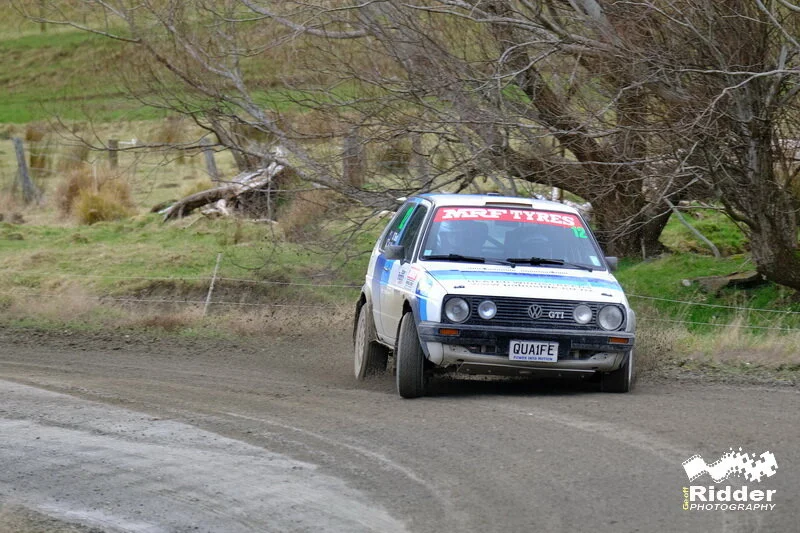
Deane Bust led home the two-wheel-drive field in his VW Golf GTI
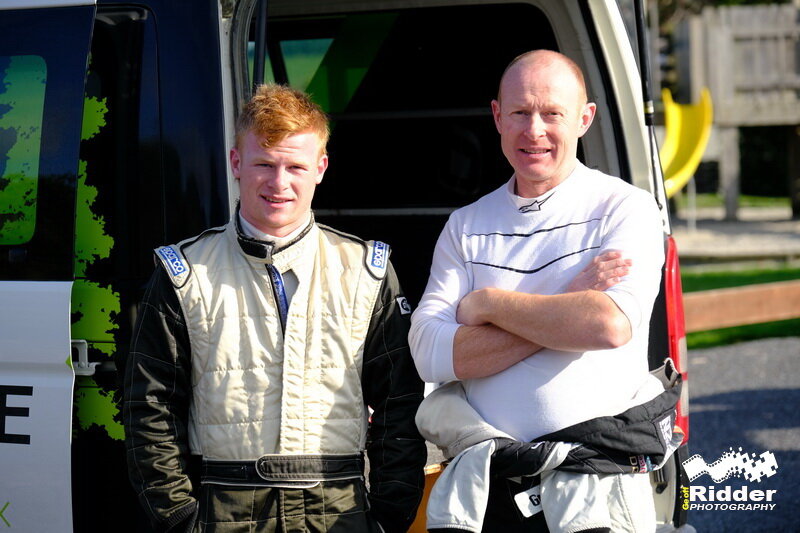
Top-seeded Hayden and Andrew Graves finished second after leading the early stages

Late-entry Regan Ross climbed to third place in his Ford Fiesta R5

1600cc class winner Richie Chadwick drive to 14th overall in his Toyota Levin
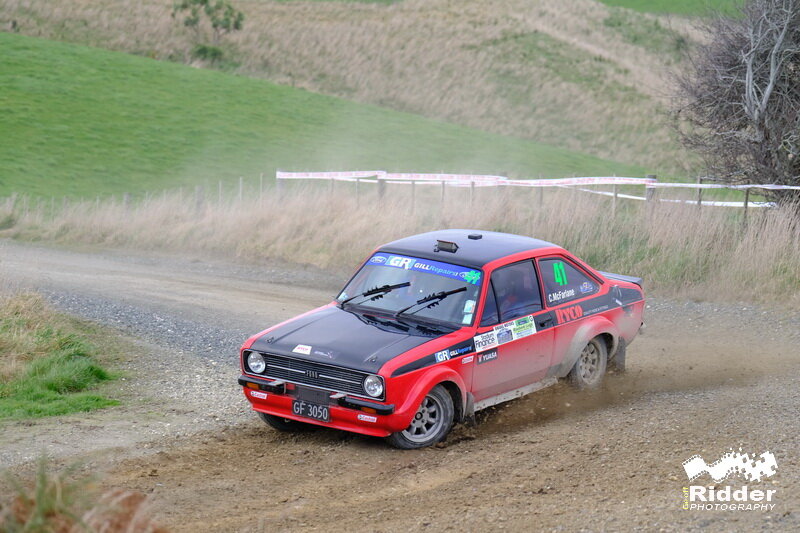
Stephen Gill won the Classic category in his Nissan-powered Ford Escort
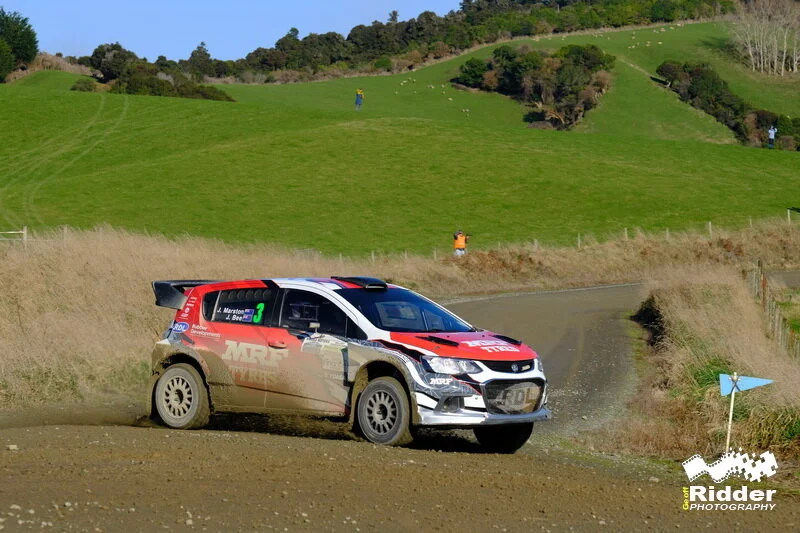
josh marston races through the Catlins countryside
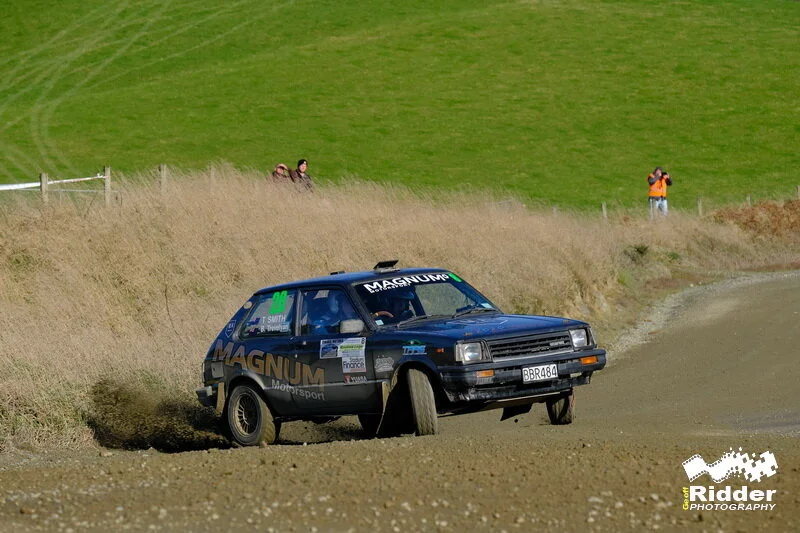
Tim Smith on a spectacular run to 16th place in his Toyota Starlet
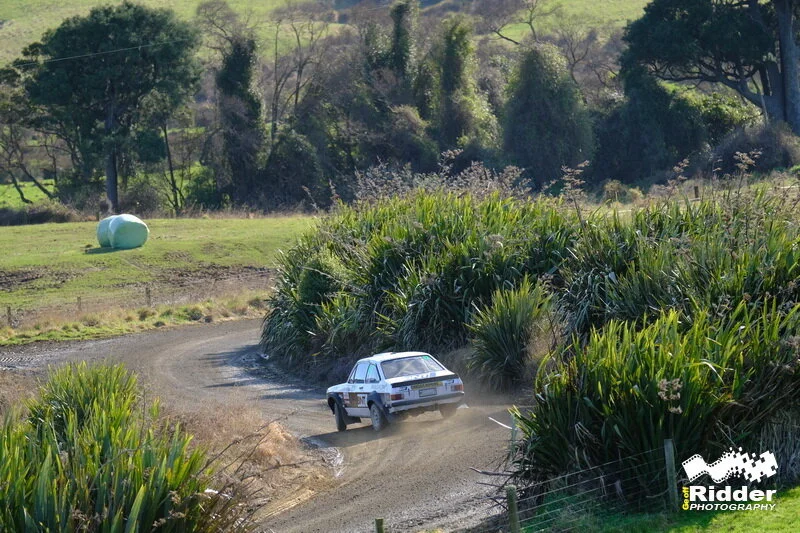
Aucklander Kingsley Jones left his Skoda Fabia R5 at home and drove a Classic Mk2 Ford Escort

Hyundai driver Hayden Paddon will make his first appearance at a local rally since winning the South Canterbury event in June 2019.
Photos: Colin Smith
HAYDEN Paddon and his NZ title-winning Hyundai i20 AP4 make a return to local rallying this weekend with no chance of winning anything.
Paddon and co-driver Samantha Gray will race ahead of an 83-car field when the South Island’s Mainland Rally Series returns to action in South Otago with the 20th edition of the Catlins Coast Rally.
The former World Rally Championship star is using the event as a test session and rather than enter the rally and be eligible for a result he’ll make pace notes for the six special stages.
“My last blind (non pace-noted) rally was 15 years ago and I’m not quite brave enough to attempt one now in this kind of car,’’ said Paddon.
“So we will run at the front of the field and on pace notes. The objective is to blow the cobwebs out and test some new development ideas on the car.
“My last rally was WRC Rally GB in September, so it’s almost a year ago. And my last rally in the i20 was South Canterbury just over a year ago.’’
While New Zealand’s WRC plans and the 2020 National Rally Championship have been victims of the COVID-19 pandemic, grass roots rally sport is making a comeback.
The Catlins Coast Rally entry list is headed by four-time winner Andrew Graves (Gore) in a Mitsubishi Lancer Evo3 who will start ahead of a trio of AP4 cars piloted by Canterbury drivers Matt Summerfield (Mitsubishi Mirage), Josh Marston (Holden Barina) and Robbie Stokes (Ford Fiesta).
Last year’s Catlins winner Garet Thomas (Darfield) is seeded fifth in his Subaru Impreza ahead of Balclutha’s Dean Bond (Mitsubishi Lancer Evo6).
Heading the two-wheel-drive ranks are Marcus van Klink in his tri-rotor Mazda RX-8, Deane Buist (VW Golf GTI) and the Ford Escort of Mike Verdoner.
The rally starts from Owaka at 10am Saturday with the six-stage route totalling 152km of competitive driving. The cars return to Owaka twice for servicing and the 3.40pm finish.
Meanwhile the northern region rally calendar re-started with the South Auckland Car Club’s Maramarua Forest Rallysprint on Sunday.
The event was the fourth round of the ABC Pipe Fitters Northern Rallysprint Series, one of the few 2020 motorsport series left relatively intact in spite of COVID-19 precautions.

Darfield's Garet Thomas was the Catlins Coast Rally winner last year in his Subaru Impreza.
The series had completed three rounds prior to the Level Four lockdown and while dates have changed the series is set to complete its scheduled six rounds at the original venues.
Young Aucklander Jack Hawkeswood was quick on the 9km forest stage in Maramarua on Sunday in his Mazda2 AP4 car - improving on each of his five timed runs and setting his quickest time in the final run-off to pip Matt Jensen (Mitsubishi Lancer Evo9) by almost seven seconds.
Former series champion Graeme Featherstone (Te Aroha) was third in his Mitsubishi Lancer Evo7 while Aucklander Haydn MacKenzie – a former BNT V8s Touring Car racer - continued to show promise on his switch to gravel surfaces taking fourth place in his Mitsubishi Lancer Evo9.
The remaining Northern Rallysprint Series rounds are the Hamilton Car Club’s Hoddle Rd event near Otorohanga on August 23 and the Thames Valley Car Club Piakonui Loop Rd event near Matamata on October 4.

Young Auckland driver Jack Hawkeswood won the fourth round of the Northern Rallysprint Series on Sunday in the Maramarua Forest.

THE new Ford Focus ST is more powerful and roomier than its predecessor and delivers a significant increase in technology.
And it also gains a new status as the sharpest Focus variant among gen-four following recent confirmation that development has been halted on a successor to the all-wheel-drive RS rocket ship.
Originally scheduled for a first-quarter introduction, the made-in-Germany Ford Focus ST has weathered the COVID-19 delays to join the Fiesta ST, Mustang models and the Ranger Raptor under the Ford Performance banner.
Pricing is $59,490 (back in September a $58,990 price-tag had been advised) and the Focus hot-hatch recipe combines five-door functionality with a high output 2.3-litre four-cylinder turbo engine, front-wheel-drive and a new seven-speed sports automatic transmission with paddle shift.
Ford New Zealand sees automatic transmission as the overwhelming customer preference in this market. There is a six-speed manual with rev-matching function available in most markets including Australia.
It’s the first time a Focus hot-hatch has been offered with only two pedals – a move that widens its reach in the market to deliver something that Honda Civic Type-R and Hyundai i30 N rivals can’t and positions the Focus ST as a Volkswagen Golf GTI competitor.
The previous Focus ST had a 2.0-litre turbo engine. The fourth generation features the all-aluminium 2.3-litre unit derived from the previous RS model with twin-scroll turbocharging, an electronic wastegate and anti-lag system. It develops 206kW at 5500rpm (an increase of 22kW) accompanied by a substantial jump in torque to 420Nm (up from 360Nm) available between 3000-4000rpm.
The sharpening of the Focus also applies to the chassis tuning with 19-inch alloy wheels shod with bespoke 235/35 Michelin Pilot Sport 4S tyres and suspension that lowers ride height by 10mm compared to standard Focus models.

A torsion beam axle is standard on mainstream Focus models but the higher riding Focus Active and the ST model have an independent rear suspension and the ST debuts a new Continuously Controlled Damping (CCD) system.
The CCD system monitors suspension, steering and braking inputs at 2 milli-second frequency to adjust damping responses.
A Borg Warner electronically controlled Limited Slip Differential (eLSD) plays a key role in applying 420Nm of torque to the road. The system can pre-emptively adjust torque distribution using inputs from powertrain and vehicle dynamics sensors.
Ford says the electric power-assisted steering (EPAS) system is 15 per cent quicker than the standard Focus with just two turns lock-to-lock. And there is ST-specific steering knuckle geometry for sharper responses.
New software titled Steering Torque Disturbance Reduction has the target of reducing torque steer when applying 206kW and 420Nm to the tarmac.
Upgraded brake hardware includes larger 330mm front and 302mm rear ventilated discs with red painted callipers and Ford has developed a new electronic brake booster to provide more consistent pedal feel.
The Selectable Drive Modes offer Slippery, Normal, Sport and Track settings that adjust the eLSD, CCD, EPAS, throttle mapping, automatic transmission shift scheduling along with electronic stability control (ESC) and electronic sound enhancement (ESE) settings. In Track Mode the eLSD delivers maximum traction and the intervention of the ESC system is delayed.
A dedicated Sport button on the steering wheel allows direct access to Sport mode while the Mode button allows drivers to scroll through the Drive Mode options.
Exterior detailing includes a wide honeycomb grille, ST specific bumpers and side skirts, a rear spoiler, LED adaptive headlights, daytime running lights and tail lights.
Colour choices are Ford Performance Blue, Frozen White, Magnetic (grey), Race Red and Agate Black. Ford NZ had originally signalled a $500 premium for the searing Orange Fury seen here but has decided not to charge a premium for prestige paint.
Cabin highlights include heated Recaro sports seats with leather and suede trim and ST logos. The flat-bottom and heated ST steering wheel is trimmed with perforated leather.
Ford Performance instrumentation is standard including shift lights for when the paddles are being used. With the arrival of an automatic transmission the ST adopts the rotary e-shifter and an electronic park brake.
Standard equipment includes keyless entry and push-button start, LED ambient lighting, dual-zone climate control, rear privacy glass and heated power-folding exterior mirrors with puddle lamps.
Interestingly Australian customers get a premium Bang and Olufsen audio as standard but Ford NZ has opted for a six-speaker system.
The Focus ST is equipped with the SYNC 3 infotainment and communications platform with 8.0-inch touchscreen, Apple CarPlay and Android Auto compatibility while Siri and voice-activated text messaging can be accessed via steering wheel controls. Satellite navigation, a 180-degree rear-view camera and wireless smartphone charger are standard.
Along with a five-star ANCAP (2019) rating the Focus ST safety and driver assist roster includes Autonomous Emergency Braking (AEB) with Cyclist and Pedestrian Detection, Blind Spot Information System (BLIS) with Cross Traffic Alert, Lane Departure Warning and Lane Keep Assist and Hill Launch Assist.
Because the automatic model has been selected for the New Zealand market Adaptive Cruise Control (ACC) with Stop & Go function is standard.


Rally crews spend weeks on the road writing, checking and competing with detailed pace notes. The passing of Sir Stirling Moss at Easter reminds us where that began.
Along with 16 Formula 1 GP victories and countless wins at circuits throughout the world, Moss and co-driver Denis Jenkinson are also credited for the first successful application of what became known as pace notes.
Moss had made three previous attempts at the Mille Miglia - the annual 1000-mile road race around Italy - before he left the start line at 7.22am on May 1 1955 as part of the Mercedes-Benz factory team.
Aware that only one non-Italian driver had ever succeeded in the Mille Miglia, Moss and ``Jenks’’ had completed detailed preparations as a counter to the local knowledge of the Italian drivers
A passenger was permitted in the Mille Miglia and mainly they served as a navigator or riding mechanic or sometimes in a co-driver role sharing a stint at the wheel.
A journalist, Jenkinson was also familiar with the demands of teamwork at high speed as he had been a world motorcycle sidecar champion.
Prior to the race Moss and Jenkinson made multiple reconnaissance runs around the course, carefully detailing the dangerous corners and hazards as well as the blind corners and brows that could be taken at high speed if the driver trusted the information.
In their finished form these notes were written onto an 18-foot roll of paper that was wound into a purpose-made metal holder. Jenkinson scrolled through the notes, checking progress against the large kilometre stones at the Italian roadside. You can see footage of the device and how Jenkinson worked it in today’s video.
A pace note book used by modern co-drivers wasn’t an option. The Mercedes-Benz SLR 300 was an open sports car with a small windscreen. Rain would have turned paper into pulp.
And there was no intercom either. In car capable of 170mph - with a straight-eight engine based on the Mercedes W196 Formula 1 car with open exhausts - Jenkinson delivered the instructions to Moss by a series of hand signals.

Modern in-car WRC footage offers an insight into the perfected pace note science from the security of a closed cockpit, with a full roll cage, harness and a sophisticated intercom system.
The Moss and Jenkinson system may have been rudimentary but it represents the first successful application of pace notes and of making a car quicker from A to B on a partially known piece of road because of the cooperative efforts between driver and navigator.
Moss and Jenkinson won the 1955 race – beating team-mate Juan Manual Fangio by 32 minutes - at a new record average speed of 99mph that remained unbeaten when the Mille Miglia was banned after 1957.
Moss actually rated the 1955 Mille Miglia win as his greatest success.
``Even now, so many years afterwards, the memory is fresh – of all the races I entered, and finished, and even those I won, I can’t find another to compare with it,’’ he wrote in the 1974 compilation My Greatest Race edited by Adrian Ball.
RIP Sir Stirling Moss. Not only a motor racing legend but part of a pioneering duo whose innovation influences every major rally today.
# We welcome Colin Smith as a contributor to MotoringNZ.com and acknowledge that this first story seems particularly appropriate. In addition to being a highly-talented motorsport and motoring writer, he’s also a respected rally co-driver.

MotoringNZ reviews new cars and keeps readers up-to-date with the latest developments on the auto industry. All the major brands are represented. The site is owned and edited by New Zealand motoring journalist Richard Bosselman.